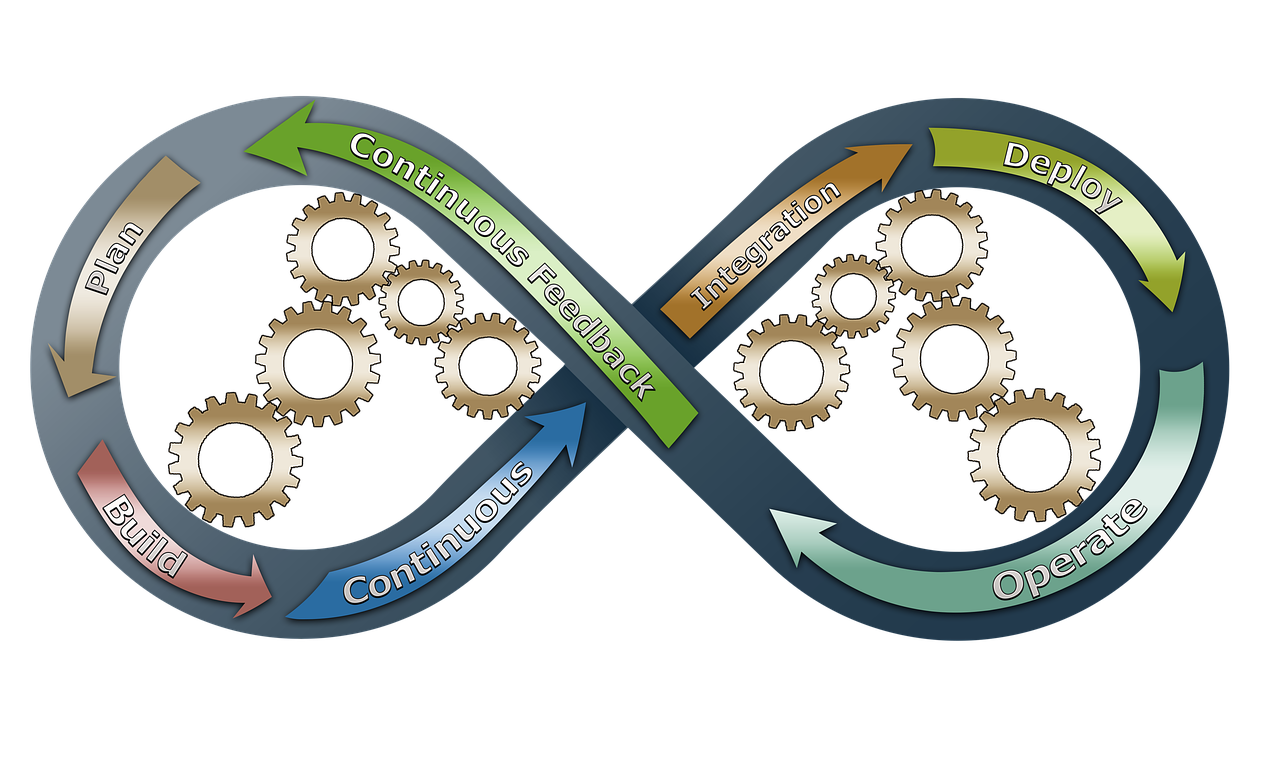Last week, I spoke about the importance of actioning customer feedback, so I would now like to focus on continuous improvement by using the information to optimise your brands and services.
If you prefer to listen rather than read:
The Customer’s Need for Continuous Improvement
The only constant in business today is change! And customers expect businesses to be constantly adapting and preparing for their future needs.
A survey by Salesforce reported that 76% of consumers expect companies to understand their needs and expectations.
Thriving in this dynamic environment requires a commitment to continuous improvement and a deep understanding of customer needs and preferences.
Businesses that embrace these practices enhance their products and services and craft exceptional customer experiences, setting themselves apart from the competition.
This blog looks at the critical role of continuous improvement and customer feedback, offering insights and strategies to help organizations stay ahead and resonate with their market.
The Value of Continuous Improvement
Continuous improvement is not just a strategy; it’s a mindset that drives business growth and success. In a world where customer expectations are continually evolving, companies that prioritize ongoing improvement can adapt, innovate, and remain competitive.
For instance, Toyota, through its Kaizen philosophy, has seen a significant reduction in production costs and an increase in vehicle quality.
1.1 The Concept of Continuous Improvement
Continuous improvement, a philosophy embodied by concepts like Kaizen and lean management, is about making small, incremental changes that collectively lead to significant enhancements.
This approach is not just about streamlining processes; it’s about fostering a culture where every team member is empowered and encouraged to seek out ways to enhance performance and productivity.
A study by Bain & Company revealed that companies embracing lean management and continuous improvement techniques saw a 20% increase in customer satisfaction and a 35% growth in financial performance.
1.2 Benefits of Continuous Improvement
The benefits of continuous improvement extend beyond operational efficiency. It’s about nurturing a proactive culture that anticipates and responds to changes swiftly.
Organisations that adopt this approach witness improved productivity, heightened customer satisfaction, and a robust capacity for innovation. It’s not just about doing things right; it’s about doing the right things, continually.
For example, Motorola’s Six Sigma program has reportedly saved the company over $17 billion over the years.
Leveraging Customer Feedback for Improvement
Customer feedback is an invaluable resource, offering direct insights into what’s working and what’s not.
Microsoft’s decision to reintroduce the Start menu in Windows, following widespread customer feedback, significantly improved user satisfaction and acceptance.
2.1 Listening to Customer Voice
Customers interact with businesses through various channels, each offering unique insights. From surveys to social media interactions and direct customer service engagements, understanding how to collect and leverage these interactions is crucial.
Each channel provides a different perspective, collectively offering a comprehensive view of customer sentiment and experience.
Adobe’s Digital Trends Report highlighted that companies with strong omnichannel customer engagement strategies retain on average 89% of their customers compared to 33% for companies with weak omnichannel strategies.
2.2 Analyzing Customer Feedback
Collecting feedback is just the beginning. The real value lies in integrating and analyzing this data to extract actionable insights.
Techniques like sentiment analysis and text mining help identify trends, patterns, and specific areas that require attention. It’s about converting raw data into strategic intelligence.
Airbnb uses machine learning algorithms to analyze feedback and reviews, helping to enhance the guest and host experience continually.
2.3 Prioritizing Actionable Feedback
Not all feedback is created equal. Prioritizing feedback that aligns with organizational goals and has the potential for the most significant impact is crucial. It’s about discerning the actionable from the noise and focusing efforts where they can drive meaningful change.
A study by Gartner indicated that brands that prioritize customer experience initiatives see a 20% increase in customer satisfaction.
Establishing a Feedback-Driven Culture
A feedback-driven culture is not just about collecting information and developing insights; it’s about valuing and acting upon them.
3.1 Leadership Support and Commitment
Leadership plays a pivotal role in fostering a feedback-driven culture. It’s about setting an example, actively seeking and responding to feedback, and promoting an environment of transparency, openness, and continuous learning.
Jeff Bezos, Amazon’s former CEO, is known for his email address being available to customers and his involvement in customer service, highlighting the company’s commitment to customer feedback.
3.2 Employee Engagement and Empowerment
Employees are at the frontline of customer interaction and often have the most insightful feedback. Engaging and empowering them to share their observations and ideas is crucial.
Regular communication, feedback training, and involving them in decision-making processes ensure that their insights contribute to the organization’s continuous improvement efforts.
Companies like Google and 3M allow their employees dedicated time to explore their projects, leading to innovative products like Gmail and Post-it Notes.
3.3 Creating Feedback Channels and Opportunities
Offering various channels and opportunities for customers to share their experiences is vital. From surveys and focus groups to user testing sessions and customer advisory boards, each platform offers unique insights, helping businesses stay attuned to customer needs and expectations.
Lego’s Ideas platform, where customers can submit their designs for new sets, has been a huge success, engaging the community and driving product innovation.
Closing the Feedback Loop
Closing the feedback loop is about more than just collecting and analyzing data; it’s about communicating back to the customers, showing that their input is valued and acted upon.
4.1 Prompt and Personalized Responses
Acknowledging feedback promptly and personally is crucial. It shows customers that their input is valued and that the organization is committed to addressing their concerns or suggestions.
A study by Harvard Business Review showed that companies that respond to customer feedback within 24 hours have a 30% higher customer satisfaction than those that don’t.
4.2 Communicating Changes and Improvements
Transparently communicating the changes and improvements made based on customer feedback is essential. It’s about showcasing the impact of customer input and reinforcing the value of their contribution to the business’s continuous improvement journey.
When Dominos acknowledged its pizza quality issues based on customer feedback and launched a campaign showing the improvements, it led to a substantial increase in sales and brand trust.
Data-Driven Decision Making
In an era where data is king, leveraging customer feedback alongside other data sources is crucial for informed decision-making.
5.1 Customer Feedback Metrics
Metrics like Net Promoter Score (NPS), Customer Satisfaction Score (CSAT), and Customer Effort Score (CES) offer quantifiable insights into customer satisfaction and experience.
Understanding and tracking these metrics help organizations gauge their performance and guide their continuous improvement efforts.
According to Bain & Company, a promoter (a high scorer on NPS) is worth 4 to 6 times more than a detractor over time.
5.2 Data Analysis and Visualization
Data analysis and visualization tools transform raw data into clear, actionable insights. Dashboards, visual representations, and data-driven storytelling make it easier for decision-makers to understand trends, patterns, and relationships, guiding strategic decisions and improvement initiatives.
Companies like Netflix use big data analytics to understand viewing patterns and preferences, driving content creation and recommendations.
Iterative Approach to Improvement
Continuous improvement is not a one-time effort; it’s an ongoing process that requires regular evaluation and refinement.
6.1 Test-and-Learn Culture
Fostering a test-and-learn culture encourages experimentation and innovation. Techniques like A/B testing and prototyping allow organizations to gather data, validate hypotheses, and refine their strategies based on real-world feedback and results.
Google’s culture of innovation is driven by its ‘Launch and Iterate’ approach, allowing them to refine their products continually based on user feedback.
6.2 Failure as an Opportunity for Learning
Embracing failure as a learning opportunity is crucial. It’s about creating an environment where risks are encouraged, and failures are seen not as setbacks but as valuable lessons and catalysts for growth and improvement.
Spanx founder Sara Blakely credits her success to her father’s encouragement to fail and learn from those failures, underlining the value of embracing mistakes as stepping stones to success.
Employee Engagement in Continuous Improvement
Engaging employees in the continuous improvement process not only leverages their firsthand experience and insights but also fosters a sense of ownership and commitment.
7.1 Employee Feedback and Suggestions
Capturing and valuing employee feedback and suggestions is pivotal. Techniques like suggestion boxes, surveys, and forums ensure that employees’ voices are heard and that their insights contribute to the organization’s improvement efforts.
Toyota’s suggestion system receives millions of ideas from its employees annually, contributing significantly to its operational efficiency and innovation.
7.2 Recognition and Rewards for Improvement Efforts
Recognizing and rewarding employees for their contributions to continuous improvement is essential. Incentive programs, recognition ceremonies, and career development opportunities reinforce the value of their contributions and encourage ongoing participation and engagement.
When HCL Technologies implemented an ‘Employee First’ policy, empowering and recognizing employees, it saw a dramatic increase in revenue and customer satisfaction.
Establishing a Feedback-Driven Culture
A feedback-driven culture is not just about collecting information and developing insights; it’s about valuing and acting upon them.
3.1 Leadership Support and Commitment
Leadership plays a pivotal role in fostering a feedback-driven culture. It’s about setting an example, actively seeking and responding to feedback, and promoting an environment of transparency, openness, and continuous learning.
Jeff Bezos, Amazon’s former CEO, is known for his email address being available to customers and his involvement in customer service, highlighting the company’s commitment to customer feedback.
3.2 Employee Engagement and Empowerment
Employees are at the frontline of customer interaction and often have the most insightful feedback. Engaging and empowering them to share their observations and ideas is crucial.
Regular communication, feedback training, and involving them in decision-making processes ensure that their insights contribute to the organization’s continuous improvement efforts.
Companies like Google and 3M allow their employees dedicated time to explore their projects, leading to innovative products like Gmail and Post-it Notes.
3.3 Creating Feedback Channels and Opportunities
Offering various channels and opportunities for customers to share their experiences is vital. From surveys and focus groups to user testing sessions and customer advisory boards, each platform offers unique insights, helping businesses stay attuned to customer needs and expectations.
Lego’s Ideas platform, where customers can submit their designs for new sets, has been a huge success, engaging the community and driving product innovation.
Closing the Feedback Loop
Closing the feedback loop is about more than just collecting and analyzing data; it’s about communicating back to the customers, showing that their input is valued and acted upon.
4.1 Prompt and Personalized Responses
Acknowledging feedback promptly and personally is crucial. It shows customers that their input is valued and that the organization is committed to addressing their concerns or suggestions.
A study by Harvard Business Review showed that companies that respond to customer feedback within 24 hours have a 30% higher customer satisfaction than those that don’t.
4.2 Communicating Changes and Improvements
Transparently communicating the changes and improvements made based on customer feedback is essential. It’s about showcasing the impact of customer input and reinforcing the value of their contribution to the business’s continuous improvement journey.
When Dominos acknowledged its pizza quality issues based on customer feedback and launched a campaign showing the improvements, it led to a substantial increase in sales and brand trust.
Data-Driven Decision Making
In an era where data is king, leveraging customer feedback alongside other data sources is crucial for informed decision-making.
5.1 Customer Feedback Metrics
Metrics like Net Promoter Score (NPS), Customer Satisfaction Score (CSAT), and Customer Effort Score (CES) offer quantifiable insights into customer satisfaction and experience.
Understanding and tracking these metrics help organizations gauge their performance and guide their continuous improvement efforts.
According to Bain & Company, a promoter (a high scorer on NPS) is worth 4 to 6 times more than a detractor over time.
5.2 Data Analysis and Visualization
Data analysis and visualization tools transform raw data into clear, actionable insights. Dashboards, visual representations, and data-driven storytelling make it easier for decision-makers to understand trends, patterns, and relationships, guiding strategic decisions and improvement initiatives.
Companies like Netflix use big data analytics to understand viewing patterns and preferences, driving content creation and recommendations.
Iterative Approach to Improvement
Continuous improvement is not a one-time effort; it’s an ongoing process that requires regular evaluation and refinement.
6.1 Test-and-Learn Culture
Fostering a test-and-learn culture encourages experimentation and innovation. Techniques like A/B testing and prototyping allow organizations to gather data, validate hypotheses, and refine their strategies based on real-world feedback and results.
Google’s culture of innovation is driven by its ‘Launch and Iterate’ approach, allowing them to refine their products continually based on user feedback.
6.2 Failure as an Opportunity for Learning
Embracing failure as a learning opportunity is crucial. It’s about creating an environment where risks are encouraged, and failures are seen not as setbacks but as valuable lessons and catalysts for growth and improvement.
Spanx founder Sara Blakely credits her success to her father’s encouragement to fail and learn from those failures, underlining the value of embracing mistakes as stepping stones to success.
Employee Engagement in Continuous Improvement
Engaging employees in the continuous improvement process not only leverages their firsthand experience and insights but also fosters a sense of ownership and commitment.
7.1 Employee Feedback and Suggestions
Capturing and valuing employee feedback and suggestions is pivotal. Techniques like suggestion boxes, surveys, and forums ensure that employees’ voices are heard and that their insights contribute to the organization’s improvement efforts.
Toyota’s suggestion system receives millions of ideas from its employees annually, contributing significantly to its operational efficiency and innovation.
7.2 Recognition and Rewards for Improvement Efforts
Recognizing and rewarding employees for their contributions to continuous improvement is essential. Incentive programs, recognition ceremonies, and career development opportunities reinforce the value of their contributions and encourage ongoing participation and engagement.
When HCL Technologies implemented an ‘Employee First’ policy, empowering and recognizing employees, it saw a dramatic increase in revenue and customer satisfaction.
Conclusion
In today’s competitive business environment, continuous improvement and customer feedback are not just strategies; they’re imperatives.
Organizations that embrace a culture of continuous improvement, actively seek and act upon customer feedback, and engage their employees in the process are better positioned to meet evolving customer needs and stay ahead of the curve.
By adopting the practices and mindsets discussed in this blog, businesses can transform feedback into fuel for growth, innovation, and sustained success, ensuring that they not only meet but exceed customer expectations.
The journey towards continuous improvement is ongoing, but with a committed approach to embracing feedback and fostering a culture of learning and adaptability, businesses can not only navigate but thrive in the ever-changing business landscape.












